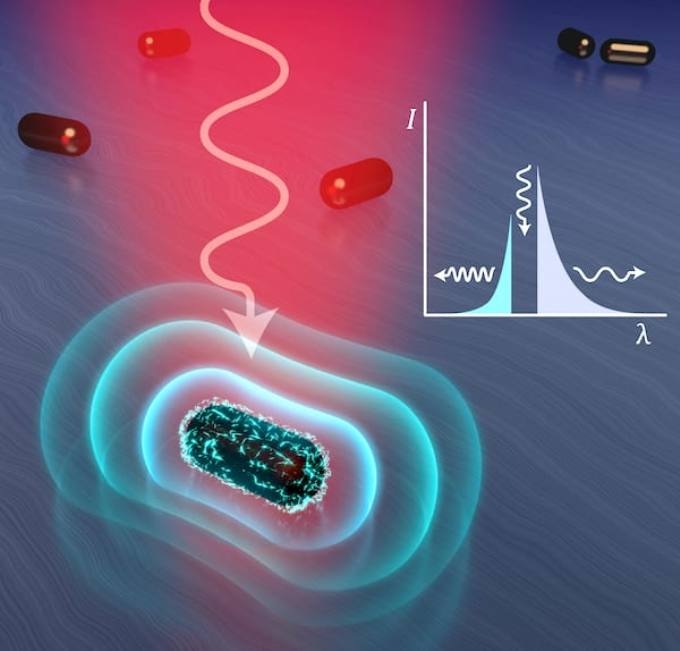Jan 29 2019
When a metal nanoparticle is illuminated, light is reflected back which usually has a different color. That is a fact, but why it does so has become a debatable topic.
 Rice University researchers argued for the dominance of photoluminescence as the source of light emitted by plasmonic metal nanoparticles in a new paper. Their techniques could be used to develop solar cells and biosensors. (Image credit: Anneli Joplin)
Rice University researchers argued for the dominance of photoluminescence as the source of light emitted by plasmonic metal nanoparticles in a new paper. Their techniques could be used to develop solar cells and biosensors. (Image credit: Anneli Joplin)
In a recent paper published in Nano Letters—the American Chemical Society journal—Stephan Link, a chemist from Rice University, and Yi-Yu Cai, a graduate student, presented a case that photoluminescence, not Raman scattering, gives extraordinary light-emitting characteristics to gold nanoparticles.
According to the researchers, figuring out how and why light is emitted by nanoparticles is significant for enhancing solar-cell efficiency and engineering particles that utilize light to sense or activate biochemical reactions.
The age-old debate, with established researchers on either side, is about how light of a single color causes certain nanoparticles to produce light of a varied color. The paper’s lead author Cai stated that the debate emerged from semiconductor studies conducted in the 1970s and has now been newly extended to the area of plasmonic structures.
The Raman effect is like a ball that hits an object and bounces off. But in photoluminescence, the object absorbs the light. The energy in the particle moves around and the emission comes afterwards.
Yi-Yu Cai, Study Lead Author and Graduate Student, Rice University.
The first spectroscopy research on luminescence from single plasmonic nanorods was reported by Link’s research team eight years ago. The latest study builds upon that work, demonstrating that the light appears when hot carriers—the holes and electrons in conductive metals—are activated by energy from a continuous wave laser and reintegrate as they relax, with photons being emitted during the interactions.
When certain frequencies of laser light were illuminated onto gold nanorods, the investigators were able to perceive temperatures, which according to them, could only materializes from excited electrons. That is an indication of photoluminescence, since the Raman view presumes that light emission is caused by phonons and not by the excited electrons.
According to Cai and Link, the proof appears in the anti-Stokes’ efficiency as compared to Stokes emission. When the energetic output of a particle is higher than the input, anti-Stokes emission appears; by contrast, when the reverse is true, Stokes emission—the topic of a previous study by the laboratory—appears.
Once believed to be a background effect associated with the surface-enhanced Raman scattering phenomenon, Both Stokes and anti-Stokes measurements have become full of valuable information crucial for researchers, stated Cai.
Metallic nanoparticles, including silver and aluminum, are also plasmonic, and Cai anticipates that these will also be tested to establish their Stokes and anti-Stokes characteristics, but before that, he and his coworkers will examine the way photoluminescence decays over time.
“The direction of our group moving forward is to measure the lifetime of this emission, how long it can survive after the laser is turned off,” he stated.
The study co-authors are Rice alumni Eric Sung, Runmin Zhang, Jun Liu, Yue Zhang, and Wei-Shun Chang; research scientist Lawrence Tauzin; graduate student Behnaz Ostovar, and Peter Nordlander, a professor of physics and astronomy, of electrical and computer engineering and of materials science and nanoengineering. Link is a professor of chemistry and of electrical and computer engineering.
The Robert A. Welch Foundation, the Air Force Office of Scientific Research through the Department of Defense Multidisciplinary University Research Initiative, and the National Science Foundation supported the study.